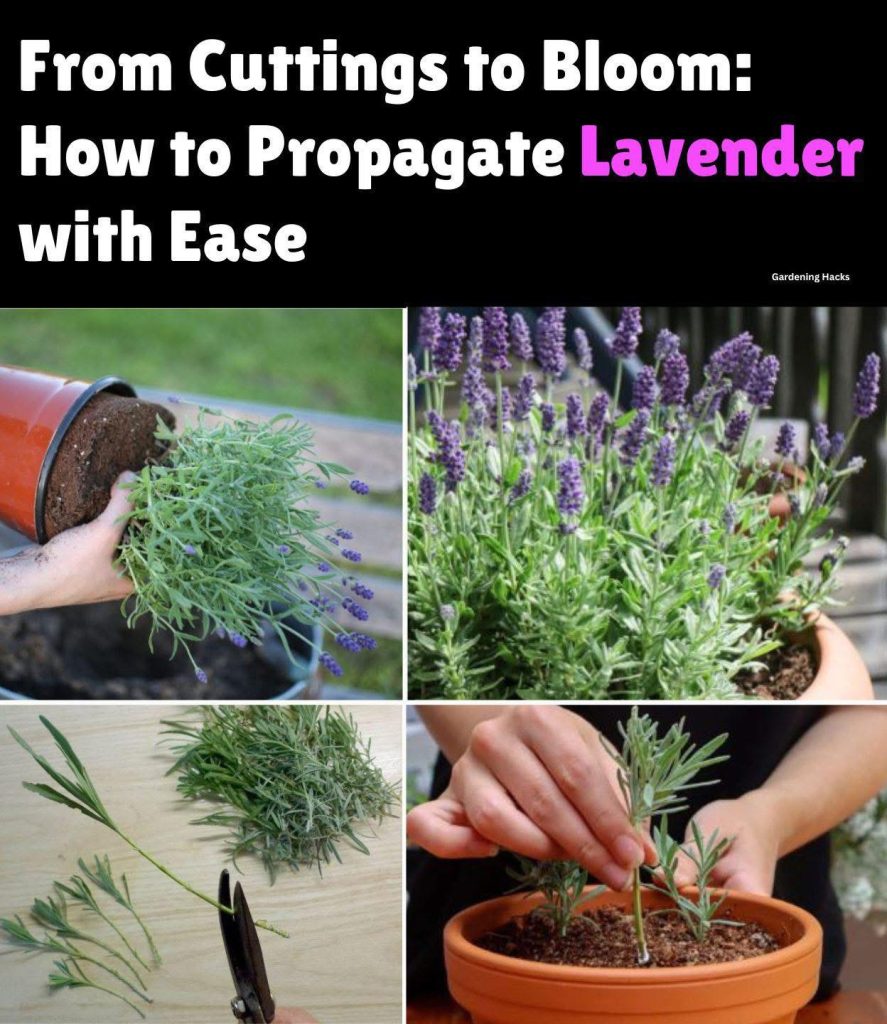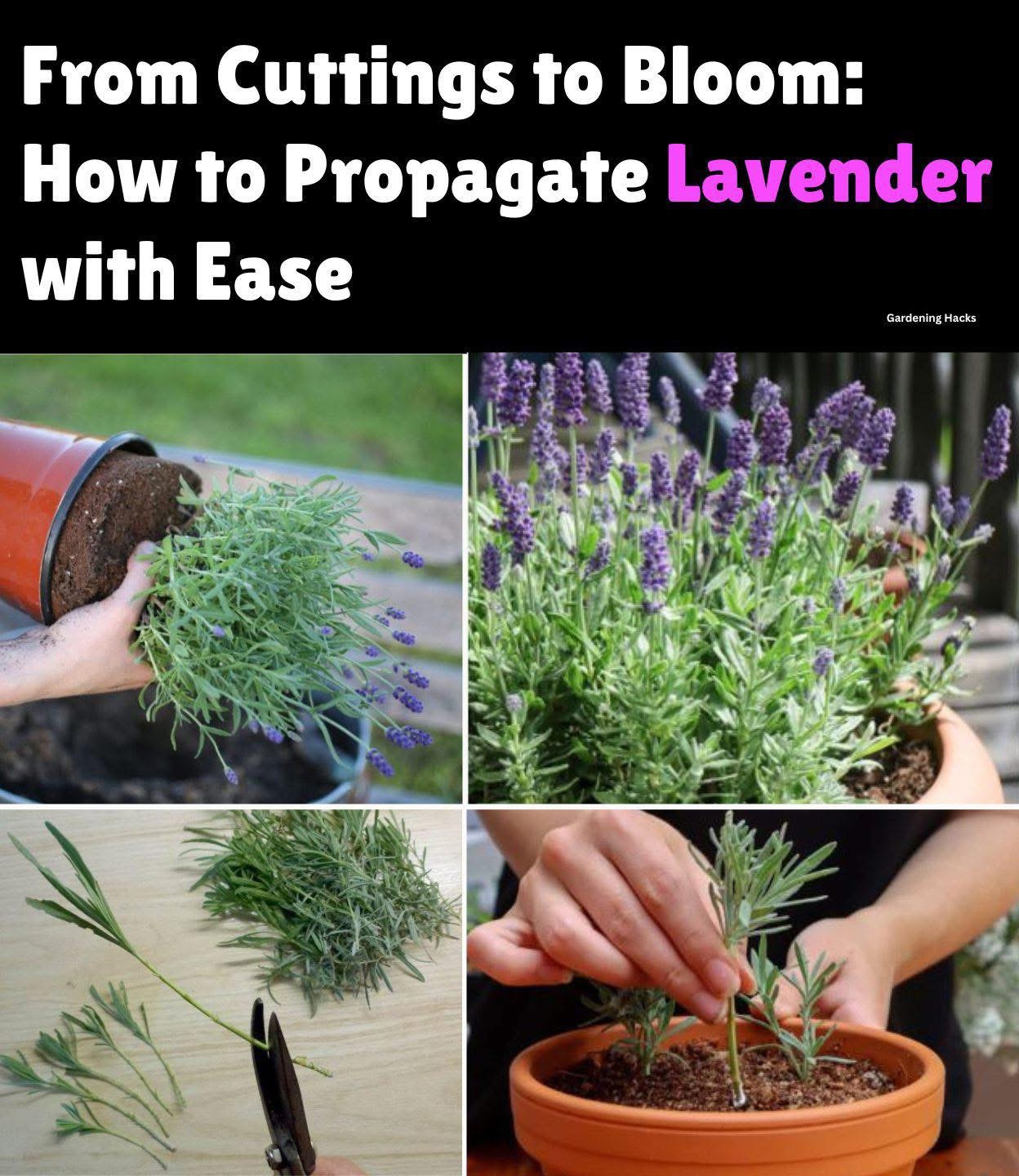
From Cuttings to Bloom: How to Propagate Lavender with Ease
Lavender, with its calming scent, vibrant blooms, and versatile uses, is a favorite among gardeners. Whether used for decorative purposes, culinary enhancements, or aromatherapy, lavender is a timeless herb that brings charm to any garden. The best part? You can propagate lavender easily at home — turning a single plant into a flourishing garden.
This article will guide you step-by-step on how to propagate lavender from cuttings, ensuring you can enjoy more of this beautiful herb without spending extra at the nursery.
Introduction to Lavender Propagation
Propagation is the process of growing new plants from existing ones. For lavender, the most reliable and rewarding method is stem cuttings. Compared to growing from seeds (which can be slow and unpredictable), cuttings produce mature plants faster and with consistent quality.
Ingredients and Tools Needed
To begin, gather the following items:
Materials:
- A healthy, mature lavender plant
- Sharp, clean scissors or pruning shears
- Small pots or seedling trays
- Potting mix (light and well-draining)
- Rooting hormone (optional but recommended)
- A clear plastic bag or humidity dome
- Water
- Labels (optional)
Step-by-Step Instructions
Step 1: Choose Your Cutting
- Select non-flowering stems from your lavender plant.
- Look for healthy green stems that are semi-woody — not too tender and not too old.
Step 2: Make the Cut
- Using clean shears, cut a 4–6 inch (10–15 cm) stem just below a leaf node.
- Remove the leaves from the lower half of the stem to expose the bare stem.
Step 3: Dip in Rooting Hormone (Optional)
- If you’re using rooting hormone, dip the cut end of the stem into the powder. This helps speed up the rooting process.
Step 4: Plant the Cutting
- Fill a small pot with well-draining potting mix.
- Use a stick or pencil to make a hole, and insert the cutting into the soil.
- Firm the soil around the stem gently to hold it in place.
Step 5: Water and Cover
- Water the cutting lightly.
- Cover the pot with a clear plastic bag to retain humidity (avoid touching the leaves).
- Place it in a bright, indirect sunlight location.
Step 6: Wait for Roots
- Roots should begin to form in 2–4 weeks.
- Check by gently tugging the cutting—resistance means roots are growing.
Step 7: Transplant
- Once roots are well developed, transplant your new lavender plant into a larger pot or directly into the garden.
The Science Behind Lavender Propagation (Formation)
When you propagate lavender through cuttings, you’re encouraging the stem to form new roots through a process called adventitious rooting. The exposed node (where leaves were removed) is rich in plant hormones like auxin, which stimulate root development. Rooting hormone powders mimic and enhance this natural process, increasing your success rate.
A Brief History of Lavender
Lavender has been cultivated for over 2,500 years, cherished by the Romans, Greeks, and Egyptians. The name comes from the Latin “lavare,” meaning “to wash,” as it was commonly used in baths for its fragrance and healing properties. Over time, it spread across Europe and into global gardens as both a medicinal herb and ornamental favorite.
Benefits of Propagating Lavender
- Cost-Effective – Grow multiple plants from one parent plant.
- Eco-Friendly – No need to buy new plants or use plastic pots repeatedly.
- Satisfaction – Watching your cutting thrive is incredibly rewarding.
- Garden Enhancement – Lavender attracts pollinators like bees and butterflies.
- Home Uses – Enjoy dried lavender, essential oils, herbal teas, and more!
Nutrition (Bonus Tip for Use)
Though lavender is not consumed in large quantities, it offers small amounts of:
- Vitamin A
- Iron
- Calcium
- Antioxidants
Use culinary lavender (L. angustifolia) in recipes like lavender lemonade, shortbread cookies, or infused syrups.
For the Lovers of Lavender
Lavender lovers adore it for many reasons — from the calming aroma that relieves stress and anxiety to its beauty in borders and pots. It’s a symbol of purity, devotion, and calmness, often used in weddings, bath products, and homemade crafts.
If you’re passionate about plants, propagating lavender is a deeply fulfilling hobby.
Methods Recap
- Softwood Cuttings: Taken in spring, they root quickly but need humidity control.
- Semi-Hardwood Cuttings: Best in late summer when stems are firmer.
- Hardwood Cuttings: Slow to root but very hardy, taken in fall or winter.
Choose your method depending on the season and your gardening style.
Conclusion
With just a few simple steps, you can transform one lavender plant into many. Propagation from cuttings is not only budget-friendly but also a gratifying way to nurture your green thumb. Whether you’re aiming for a fragrant balcony or a backyard filled with blooms, lavender propagation is your gateway to a blooming, buzzing, and aromatic garden.
So grab your scissors, choose your cuttings, and let your garden flourish with the scent of success!
